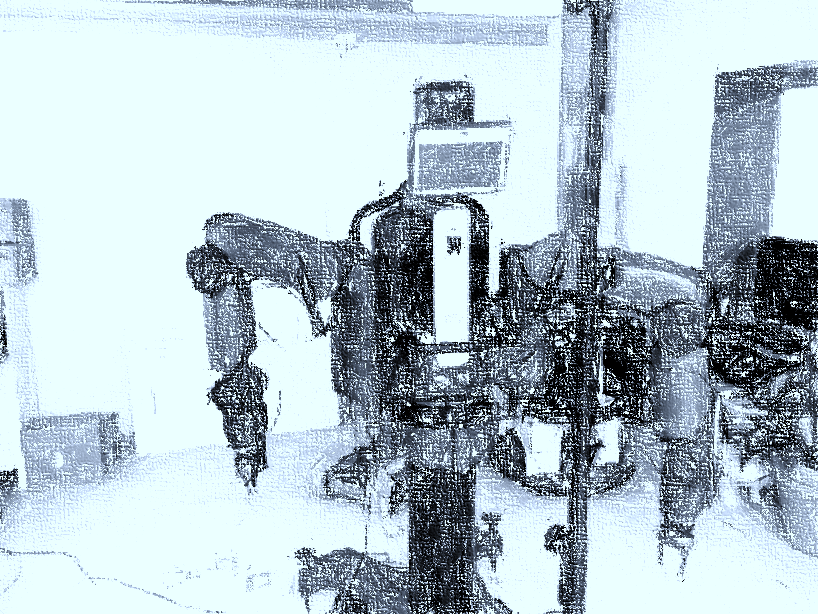During the outbreak of coronavirus in all European countries many researchers, health care professionals and policy makers have raised the concern of loneliness experienced by older adults during a time of social distancing. Loneliness, defined as a subjective experience of social isolation, have been considered a major health risk for adults aged 65 and over for a long time. It may not be associated with the extent and quality of social networks from: a person can feel lonely regardless of the amount or quality of social and personal relationships, networks and social structures.
Now when many countries and governments need to adjust legislation to limit the social contacts, experiencing loneliness among older adults has become a more accurate question than ever.
Many sociologists in social media have encouraged technology users regardless of age to minimize physical distancing, not social distancing. Whereas physical distancing is crucial to diminish health consequences during covid-19 pandemic, social distancing can have harmful effects both for the economy and for public health. As an opposite to social distancing, remaining socially conntected does not necessarily require physical connectedness. Within the help of digital technologies, all of use can remain socially connected.
Or can we?
In the BCONNECT@Home project we have investigated the association between the usage of digital mobile technology and social connectedness with a survey including 121 respondents aged 55 and 74 in Sweden. The survey was designed to analyse the connection between digital mobile practices conducted with a smart phone and social connectedness within three dimensions: connectedness with personal relationships, connectedness with community and connectedness with society.
Oldest adults use digital mobile technologies actively in Sweden
Our study support the argument that digital exclusion between age groups is diminishing in Sweden. In our analysis, focused on respondents aged between 55 and 74 from Sweden, we found that older adults have adopted digital mobile practices to their daily life to an extensive extent. Nearly all respondents use the smartphone for text messages, but receiving or sending voice or video calls is relatively rare. The differences between the age groups are quite small, which shows that even the oldest adults (aged over 70) are actively online in Sweden. Using the smartphone for gaming is a more frequent activity among younger age groups.
Digital mobile technology enhances connectedness with social community
Digital technologies, and information and communication technologies in particular, are expected to increase or maintain the sense of connectedness. Social connectedness, defined as engagement and belonging to one’s social networks, is often considered as a questions of quality and quantity of social networks. In our study, social connectedness based on subjective evaluation of the feeling of connectedness to others and to a community of neighbourhood.
Results show that the usage of the smartphone for digital mobile practices is positively associated with connectedness with community, and less associated with connectedness with personal relationships and society. Older adults who use their smartphone in a more versatile way report more social activities with community than respondents with less versatile digital activity.
Digital mobile technology can therefore increase connectedness in those activities that include attending with events where many people gather or engaging in cultural activities. During a time of covid-19 pandemic, particularly these activities have been restricted or limited.
Against this finding, ensuring equal opportunities for digital mobile technology use ensures that older adults can remain connected to community that has the possibility to alleviate loneliness.
Social impacts of digital technology use need to be re-considered
Sweden is considered to be one of the most digitally advanced societies. Digital technologies in various forms have been seen as a solution to support the independent, healthy and active living among older adults.
During times of uncertainty, the significance of the ability to remain digitally connected increase. In many cases, this digital connectedness have positive effects on social connectedness, but the relationship is not straightforward. This we should keep in mind after returning back to normal circumstances, particularly for those older adults living alone. Evaluating the social impacts of digital technology use need to be continued.
Results are based on a forthcoming manuscript:
Kuoppamäki, S. & Östlund, B. (2020, forthcoming). Digital mobile technology enhancing social connectedness among older adults in Sweden. In: Zhou J., Salvendy G. (eds) Human Aspects of IT for the Aged Population. HCII2020 Lecture Notes in Computer Science. Cham: Springer.


 Well, technologies may fail if they do not correspond to the users’ wishes or desires. So, there is a need for suitable user images, to ensure that millions of investments into robotics and artificial intelligence do not go to waste. Our study speaks to this need. Through developing a better understanding of how users are imagined in practice, we are now beginning to learn how and where we can improve these images; and better tailor them to our needs and expectations.
Well, technologies may fail if they do not correspond to the users’ wishes or desires. So, there is a need for suitable user images, to ensure that millions of investments into robotics and artificial intelligence do not go to waste. Our study speaks to this need. Through developing a better understanding of how users are imagined in practice, we are now beginning to learn how and where we can improve these images; and better tailor them to our needs and expectations.

